When the forecast for northern Wisconsin showed two days of fair weather after weeks of cold and rain, I loaded up my Don Kurylko–designed Alaska, which I’d lately named FOGG after Phileas Fogg, the protagonist of Jules Verne’s Around the World in 80 Days. I had nothing so grand in mind for this trip, though; my destination was Wisconsin’s Gile Flowage, a 3,400-acre reservoir near the Michigan border, a dozen miles south of Lake Superior. Here an 1880s-era sawmill dam had been unceremoniously abandoned after playing its part in reducing the old north woods to a vast field of stumps. In the 1930s, a new dam was built at the site to manage water levels for a series of hydro dams downstream. Completed in 1941, the new dam flooded a 5-mile stretch of the West Fork of the Montreal River. The result was a sprawling lake bisected by a line of rocky islands that had once been hilltops. The islands themselves, now covered with a healthy second-growth forest of oaks, maples, and spruces, remained open to my favorite kind of camping: no registration, no fees, and no reservations accepted.The drive to Gile, a town at the north end of the reservoir that I knew only as a dot on the map, involved three or four hours of winding county roads running through long stretches of forest. I had timed my departure so I’d arrive just as a series of morning thunderstorms would be ending. I got to Gile by noon, an hour later than planned. The promised good weather hadn’t yet appeared. The rain had stopped, but bristling gray clouds raced by low overhead. A flag hung from a pole near the town-park dock, snapping and cracking in the wind. Waves were crashing over the dock and onto the launch ramp, driven by a fierce southwesterly blowing across 4 miles of open water. Streaks of white foam blown off the wave crests formed long, wavering lines across the dark surface of the water, a sure sign of serious wind. .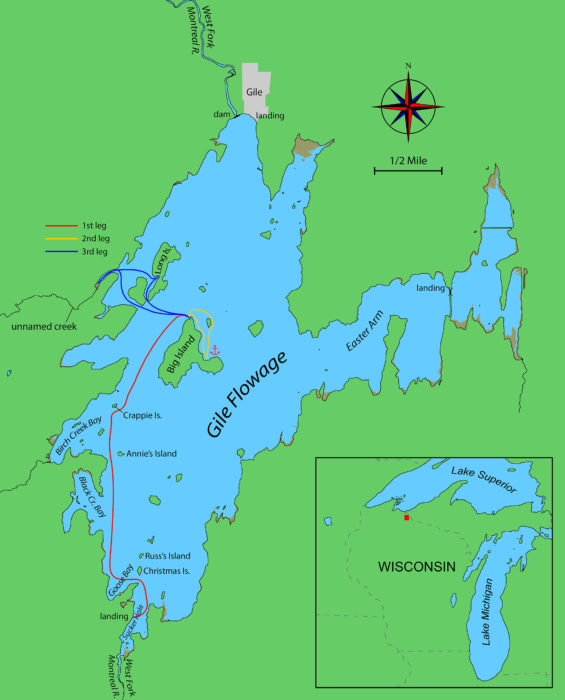 Roger Siebert
Roger Siebert
Join The Conversation
We welcome your comments about this article. To include a photo with your remarks, click Choose File below the Comment box.

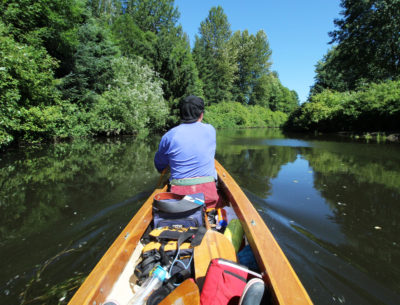
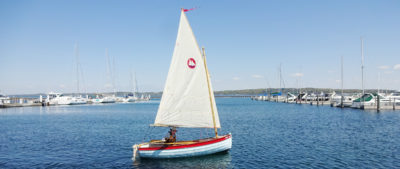
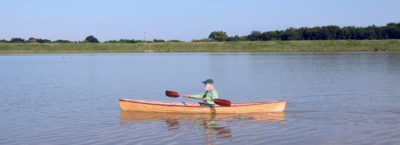
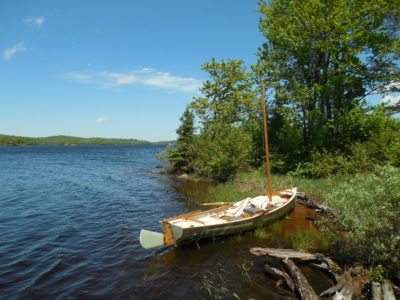
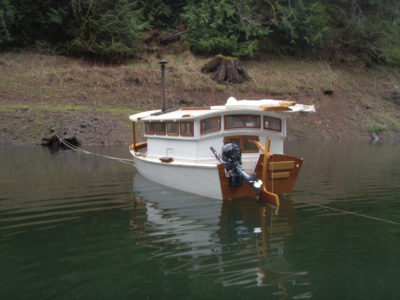

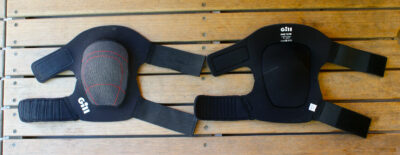
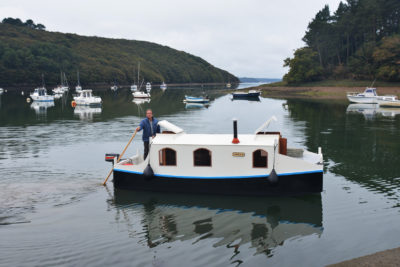
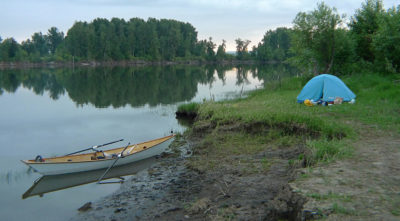
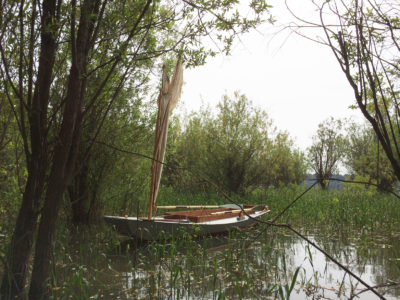
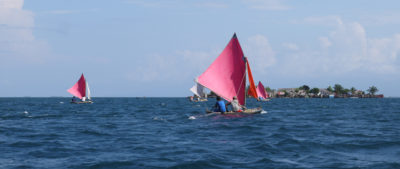
Tom:
Thanks so much for another stellar adventure write-up. They are definitely inspiring.
You discuss the difficulties of using the “traditional French misainier sheeting system” with its “need to reposition the block by hand” when tacking and gybing. Apparently, on this trip at least, your kitchen table had no such difficulties tacking and jibing in your absence.
I am a big fan of the Roger Barnes YouTube videos so I am familiar with the “helmsman pirouette” that accompanies a tack with this rig. Readers who are unfamiliar can check out his videos, and if you want to see the potential mayhem this system can produce, check out this video, starting at around 10:40.
So, I have to ask, do you use the misainier sheeting system as an anachronistic affectation: a romantic homage to the brave Breton fishermen of yore who would ply the treacherous waters of the Bay of Biscay in small open boats, in all seasons and weather, or are there situations where this system actually offers a nautical advantage over using a traveler?
Cheers,
Andy Inglis
Andy,
Thanks for the comment. As far as manually shifting the sheeting block vs. using a traveler, I don’t think it’s an affectation at all—it’s a good simple system. Here’s why: for boomless sails, the correct sheeting angle is crucial for performance—that generally means getting the sheeting point as far aft and as far outboard as possible.
On boats where the tiller is fairly high, as in my Alaska, a rope traveler long enough to clear the tiller creates enough slack to create a deep inverted “V” shape. The sheet block gets caught in that “V” and can’t slide far enough outboard for the proper sheeting angle—it sheets the sail too close to the centerline. The only way to get the block outboard is to hook it there on a cleat. That actually works fine, and I often don’t bother with a traveler unless I am expecting to gybe frequently.
On this trip, though, with frequent gusts up to 30 mph, combining a rope traveler with the manual shifting of blocks would have calmed things down a bit. That way I could gybe and let the block slide halfway over on the traveler without needing to tend it until I was ready to hook it on the cleat.
Just to reiterate: This was about as much wind as I’d like to manage, with frequent gusts over 30 mph—right at the edge of my comfort zone. In easier conditions the lack of a traveler wouldn’t have made a difference at all. I often don’t bother rigging it. I would have liked to have it here, though!
Tom
Thanks for that explanation. I get it now! Watching these rigs in action will involve less head-scratching for me.
Now get to work on your next article!
Cheers,
Andy
Tom, as always, a great read with my morning coffee. Ahh, the misainier sheeting system will be in my hands mid-August! Ron’s Ilur will be traveling 3K miles to become Rob’s Ilur, and, as such, I will be building the unhook and re-hook coordination to smooth out my tacks and jibes. And lastly the mental pictures from your words are made fast by your delightful photos.
Oh, do any of your students talk with you about sailing? Some of them must read your work I figure.
Thanks for all the inspiration you create.
Stay well,
Rob K
Rob,
Congratulations on scoring an Ilur! Though I’ve not yet seen one in person, it looks like a great design that deserves its popularity. The misainier sheeting works perfectly well—I’m sure you’ll get the hang of it soon.
As for my students, I do occasionally share my work with them, and keep a copy or two of my book on the shelf in case someone’s interested. The most popular thing I’ve shared so far has been a long essay about what it’s like as a teacher to be expected to enforce rules you don’t always agree with—actually the first piece I ever had published. But mostly, in the classroom, it’s about them and their work.
Tom
I enjoyed your trip story.
Thank you,
Culburra Beach, Australia.
Thanks, John. I appreciate it. Maybe someday I’ll get to do some sailing in Australia. Bit of a long hop for my current boat, though….
Tom